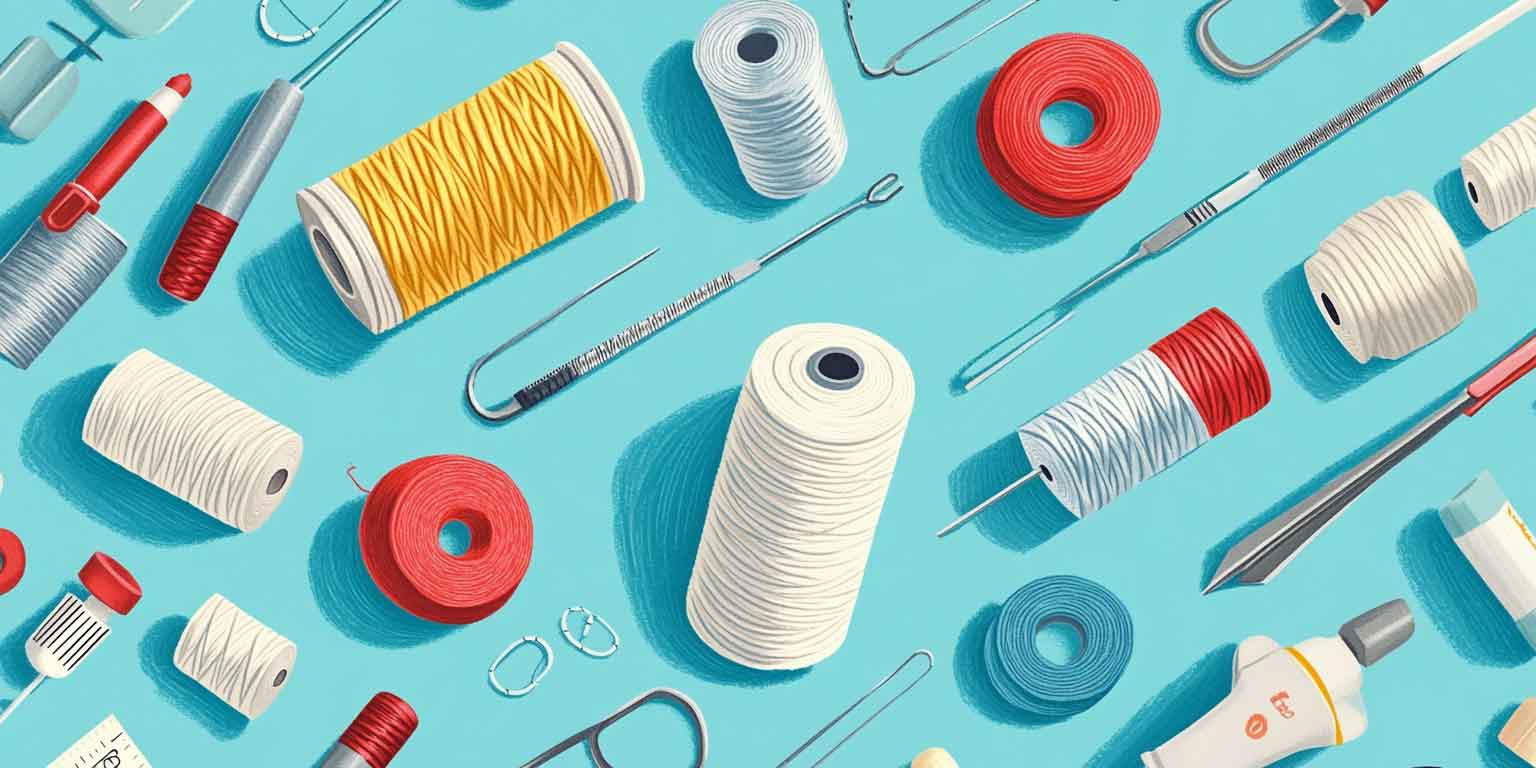Unlocking Medical Threads: Uses, Benefits, and Insights
By Dr. Stephen Cosentino
PRESIDENT OF EMPIRE MEDICAL TRAINING
Medical thread, also known as surgical suture, is a fundamental tool in modern medicine, particularly for medical aesthetic purposes. Healthcare providers use these specialized threads to close wounds, repair internal structures, and perform minimally invasive cosmetic procedures. While laypeople often refer to medical thread as "stitches," this term actually describes the technique of applying sutures rather than the materials themselves. Medical thread is also used in aesthetic medicine for procedures, such as PDO threads for laugh lines and marionette lines around the mouth.
Types of Medical Thread
Suture materials fall into two main categories: absorbable and nonabsorbable (permanent). Each category includes both natural and synthetic options, though this distinction is largely academic as both types often serve similar purposes.
Absorbable Sutures
Absorbable sutures dissolve in the body over time, eliminating the need for removal in a clinical setting. Four noteworthy types of absorbable medical threads include:
- Catgut: Derived from animal intestines, catgut sutures are natural and quickly absorbed by the body.
- Polyglycolic acid (PGA): A synthetic material that dissolves within 60-90 days.
- Polydioxanone (PDS): Another synthetic option that takes longer to absorb, typically 180-210 days.
- Poliglecaprone 25: A monofilament synthetic suture with a relatively rapid absorption rate of 90-120 days.
Nonabsorbable Sutures
Permanent sutures can remain in the body indefinitely but are generally removed once healing has progressed sufficiently. Common materials for nonabsorbable sutures include:
- Nylon
- Polyester
- Silk
- Polypropylene
Nonabsorbable sutures are suitable for many soft tissue applications, including delicate work within the cardiovascular and nervous systems.
Suturing Techniques
Surgical suturing techniques vary based on the patient's condition, wound characteristics, treatment plan, and provider preference. Standard techniques include:
- Simple interrupted suture: Individual stitches tied off separately
- Continuous suture: A single thread used in a running stitch pattern
- Mattress suture: Provides additional strength and tension distribution
- Purse-string suture: A technique using a circular stitch pattern to close round openings
- Subcuticular suture: Intradermal stitches placed beneath the skin surface for minimal scarring
Medical Thread Removal
The timing of suture removal depends on several factors, including the procedure type, location, and healing progress. Generally, sutures in areas subject to frequent movement or position changes must remain in place longer.
Typical Removal Timelines
- Face and scalp: 5-10 days
- Limbs: 10-14 days or longer
- Hands and feet: 14-21 days, with potential check-ups during this period
It's important to note that these are general guidelines, and individual cases may vary. Always follow your healthcare provider's specific instructions for suture care and removal.
Applications of Medical Thread
Medical thread serves a wide range of purposes in healthcare settings:
1. Wound Closure
The primary use of medical thread is to close wounds caused by trauma or surgical intervention. Sutures help hold the wound's edges together, promoting proper healing and minimizing scarring.
2. Internal Organ Repair
Surgeons use specialized sutures to repair damage to internal organs and structures. These sutures must be strong enough to withstand the stresses of bodily functions while promoting healing.
3. Cosmetic Procedures
Medical thread plays a significant role in minimally invasive cosmetic procedures, such as improved thread lifts. These procedures use specially designed sutures to lift and tighten sagging skin, providing a non-surgical alternative to traditional facelifts.
4. Cardiovascular Surgery
Delicate sutures are essential in cardiovascular procedures, where they repair blood vessels, close incisions in the heart, and secure implanted devices.
5. Ophthalmic Surgery
Eye surgeries require extremely fine sutures to ensure precise closure and minimal tissue damage. Specialized ophthalmic sutures are designed for this purpose.
Choosing the Right Medical Thread
Doctors and nurses must be well-versed in selecting the appropriate suture material and technique for impeccable patient care. Factors that influence this decision include:
- Wound location and characteristics
- Expected healing time
- Patient age and overall health
- Risk of infection
- Potential for allergic reactions
- Required suture strength and flexibility
Healthcare providers must carefully consider these factors to ensure optimal healing outcomes and patient comfort.
Advancements in Medical Thread Technology
The field of medical thread evolves, with ongoing research and development leading to innovative products. For example, some recent advancements include:
- Antimicrobial sutures: Coated with agents that inhibit bacterial growth
- Barbed sutures: Feature tiny barbs that anchor the thread without the need for knots
- Smart sutures: Incorporate sensors to monitor wound healing and detect infections
- Bioactive sutures: Release growth factors or medications to promote healing
These advancements improve healing outcomes, reduce complications, and enhance patient care.
Tying It All Up
Medical thread is a versatile and indispensable tool in modern healthcare. From basic wound closure to complex surgical procedures, sutures play a vital role in patient treatment and recovery. As technology advances, we can expect to see even more innovative applications for medical thread, further improving patient outcomes and expanding the possibilities of medical intervention.
Whether you're a medical professional or a patient, knowledge of medical threads contributes to better healthcare experiences and outcomes. As the field evolves, we can look forward to even more exciting developments in this fundamental aspect of the future of medicine.


